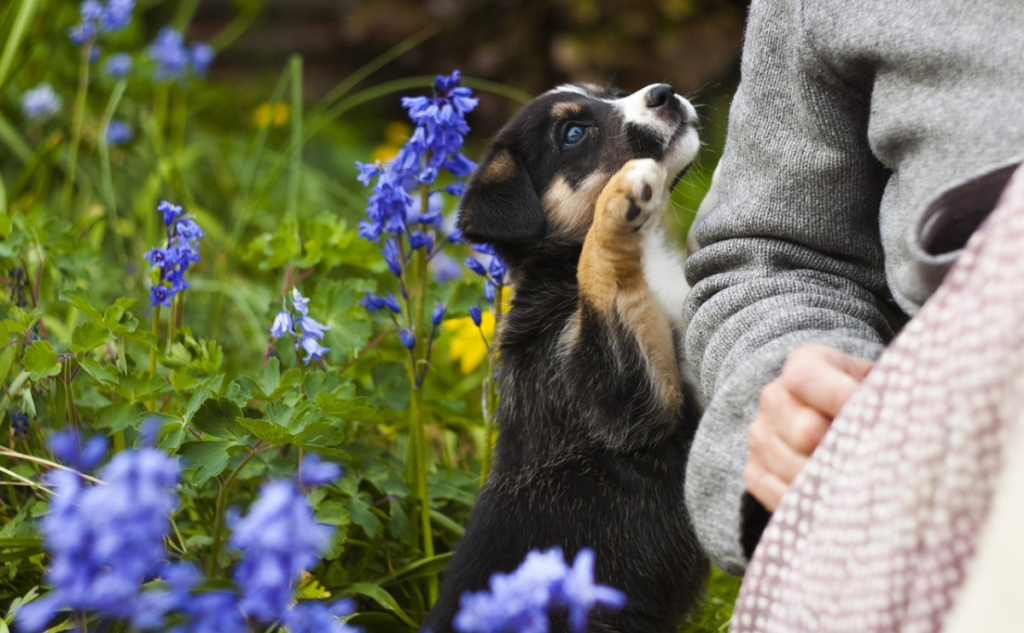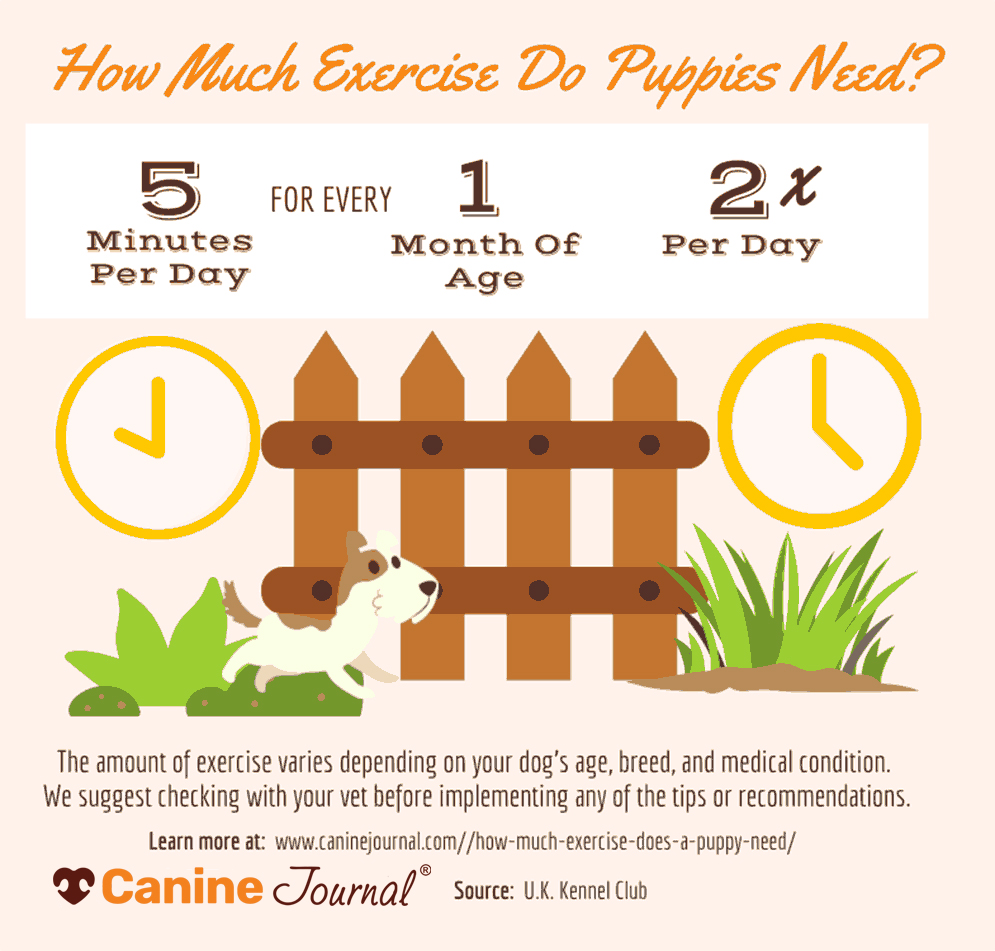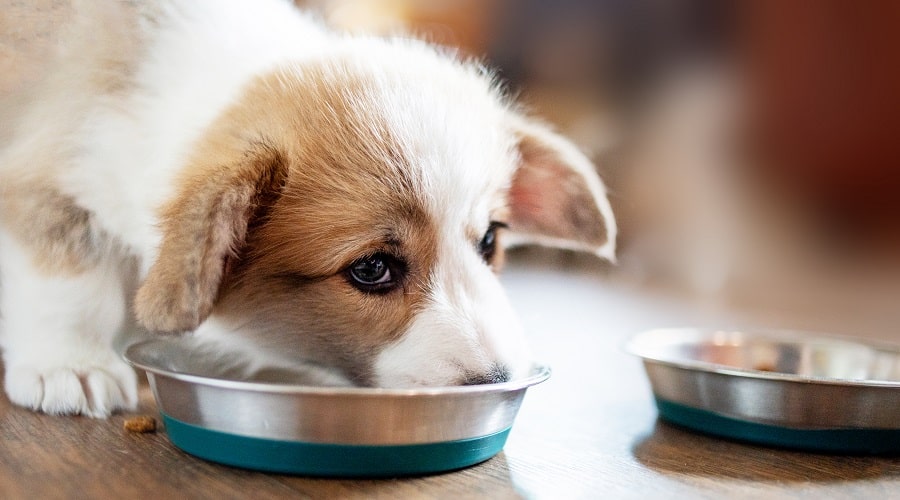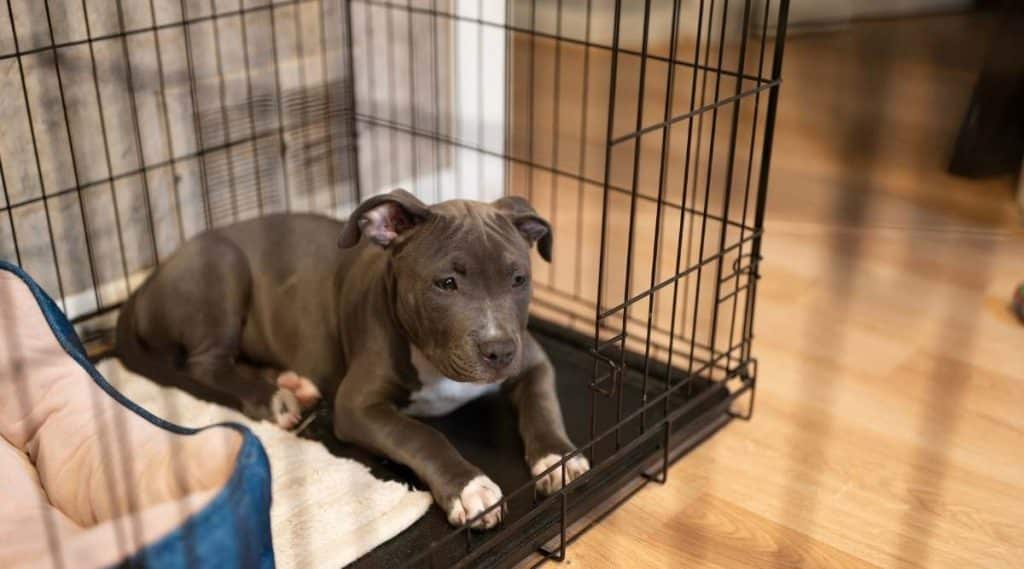This Exercise Chart Ended My Puppy’s Reign Of Terror In Just 3 Days
When you purchase through links on our site, we may earn a commission. Here’s how it works.
I love puppies. I really do. But I also know the unique, soul-splintering exhaustion of raising one. There was a week when I seriously Googled, “Can dogs become feral?” at 2 a.m.
Table of Contents
Turns out, they’re not broken. They’re likely under-exercised, overstimulated, and missing structure. Everything will change once you find the proper routine—and one easy-to-follow chart.
Let’s break it down by age, breed, and energy level—with real-world tips to burn off zoomies, build trust, and end your puppy’s reign of terror.

Why Puppy Exercise Is Everything
A tired puppy is a well-behaved puppy. Without proper exercise, your pup might start inventing their own entertainment, which often includes chewing your shoes or launching stealth attacks on your ankles.
Here’s why movement matters:
- Builds healthy joints and muscles
- Supports brain development through environmental stimulation
- Prevents behavior issues linked to boredom and excess energy
- Establishes trust and training opportunities between you and your pup
But here’s the catch: not all exercise is good exercise. Overdo it, and you risk damaging growing bones. Underdo it and you’ll be living in a house full of chewed furniture and frustration.
How Much Exercise Does A Puppy Need?
Use this simple rule: 5 minutes of structured activity per month of age, up to twice per day.
| Puppy Age | Daily Structured Exercise |
|---|---|
| 2 months | 10 minutes, 2x/day |
| 3 months | 15 minutes, 2x/day |
| 4 months | 20 minutes, 2x/day |
| 5 months | 25 minutes, 2x/day |
| 6+ months | Gradually increase based on breed and vet advice |

Breed & Size Matter (A Lot More Than You Think)
Puppy exercise isn’t one-size-fits-all. A Border Collie pup will need more mental and physical stimulation than a Bulldog of the same age.
A powerful tool for understanding activity needs is FitBark Explore—an interactive platform that compiles real-time data from dogs wearing FitBark activity trackers in over 150 countries. It allows pet parents, vets, and researchers to analyze how breed, age, lifestyle, and geography impact canine movement and rest.
According to FitBark Explore’s data, the most active puppies by breed are:
- English Cocker Spaniel
- English Springer Spaniel
- Cocker Spaniel
- Yorkshire Terrier
- Shih Tzu
- Dalmatian
- Weimaraner
- Jack Russell Terrier
- Australian Shepherd
- Dachshund (Miniature)
These dogs need mental enrichment just as much as physical play. Think agility-style games, scent work, and puzzle toys.
In contrast, puppies from these breeds tend to show lower daily activity:
Focus more on short walks and light indoor play, especially for larger breeds. This will prevent overexertion and strain on developing joints.
Mental Exercise Is Just As Crucial As Physical Play
If you think fetch is enough, think again.
Puppies crave brain workouts; without them, boredom can quickly morph into destructive behavior. Here’s how to tire them out without a single walk:
- Snuffle mats (hide treats in fabric strips)
- Frozen KONG toys filled with wet food
- Slow feeders that force them to work for meals
- Name-learning games (“Go find Duck!”)
- Clicker training mini-sessions
Mental stimulation reduces anxiety, improves focus, and builds impulse control—all crucial for growing minds.

Signs Your Puppy Might Be Over-Exercised
Overexercising a puppy is easy to do and tough to notice until the damage sets in.
Here are red flags to watch for:
- Limping or stiffness after play
- Licking joints or feet excessively
- Sluggishness or refusal to walk
- Reluctance to go out again the next day
Large-breed puppies are especially vulnerable. Too much activity during growth spurts can lead to lifelong joint issues like hip dysplasia.
Indoor vs Outdoor Exercise: Know What To Prioritize
Outdoor time is gold, but unpredictable weather or puppy vaccination schedules might keep you inside.
No worries. Mix and match your movement like this:
Indoor Ideas
- Tug-of-war (view our picks for best tug toys)
- Training games (sit, stay, touch)
- Hide-and-seek
- Stairs (only after joint development is complete)
Outdoor Favorites
- Sniff walks (allow free roaming on leash)
- Light fetch (short bursts only)
- Puppy playdates (safe, controlled environment)
Always avoid high-impact activities like running on pavement, jumping off couches, or full-on wrestling with older dogs—especially in the first 12 months.
Structuring Your Puppy’s Daily Schedule
Puppies generally rest 11–13 hours per day, but don’t let that fool you—when they’re up, they’re up. Larger breeds tend to rest more, but all puppies need consistent routines that burn energy in short, purposeful bursts.

Here’s what a balanced day could look like:
Morning
- 15 min walk
- 5 min obedience training
- Food puzzle meal
Midday
- Tug-of-war or fetch
- Nap
- Potty break
Evening
- 15 min walk
- Mental stimulation (e.g., snuffle mat)
- Chill cuddle time
Mix it up based on breed needs and your pup’s energy swings.
Quick Check: Is Your Puppy Getting The Right Amount of Exercise?
Your puppy may need more exercise if they:
- Chew furniture, shoes, or walls
- Bark excessively for no clear reason
- Zoom around the house uncontrollably
- Dig or destroy bedding
- Have trouble settling down at night
Your puppy may be over-exercised if they:
- Limp after walks or play
- Sleep excessively or seem sluggish
- Avoid playing or walking
- Lick paws or joints often
- Resist going out again the next day
Balanced puppies tend to:
- Have short bursts of play, then rest
- Eat and sleep on a schedule
- Engage happily during training
- Show curiosity, not restlessness
Puppy Exercise Chart To End The Reign Of Terror
Here it is—the simple, structured chart that’s helped bring peace to puppy households. Use it as a guide based on your puppy’s age and size, and adjust as needed with your vet’s input.
| Age | Breed Size | Daily Physical Exercise | Mental Stimulation | Red Flag Risks |
|---|---|---|---|---|
| 8–12 weeks | Small/Medium | 10–15 min x 2 | Snuffle mats, light training | Tiring easily, overheating |
| Large/Giant | 5–10 min x 2 | Short puzzles, calm enrichment | Joint strain, reluctance to move | |
| 3–4 months | Small/Medium | 15–20 min x 2 | Clicker training, name games | Hyperactivity, chewing |
| Large/Giant | 10–15 min x 2 | Frozen KONGs, beginner obedience | Limping, excessive napping | |
| 5–6 months | Small/Medium | 20–25 min x 2 | Hide-and-seek, fetch | Restlessness, overexcitement |
| Large/Giant | 15–20 min x 2 | Scent games, stair work (low impact) | Swollen joints, soreness | |
| 6+ months | Any | Increase gradually per vet | Mixed mental + physical enrichment | Any persistent stiffness or withdrawal |
So, How Do You Know You’re Getting It Right?
Your pup will tell you. If they’re alert, playful, eating well, and napping like a log, you’re probably nailing it. If they’re unruly or seem sore, it might be time to reassess.
For better insights, you can also monitor your pup’s activity level with a dog activity tracker. You can also check out our full breakdown of dog activity stats to see how your pup compares to others by breed, age, and energy level.

Over-Crating Your Dog?
Do you feel guilty about having your puppy in their crate for too long a time period? Consider a playpen for your puppy to explore and stretch their legs out a little more than the crate allows.
Check out our pick for the best puppy playpen. You might also read up on how to puppy-proof your house in case you decide to leave them out when you’re away.
Frequently Asked Questions
Understanding your puppy’s exercise needs can feel overwhelming. Below are answers to some of the most common questions new dog owners ask regarding keeping their pups active, healthy, and safe.
Don’t see yours? Ask us in the comments!
Can I Take My Puppy On Long Walks?
Not yet. Long walks can overwork a puppy’s developing joints. Stick to short, structured sessions based on age and always allow time for sniffing and breaks.

What If My Puppy Doesn’t Like Walks?
That’s totally normal, especially early on. Use positive reinforcement and treats, and allow them to explore at their own pace. Focus on building confidence.
How Do I Know If Play Counts As Exercise?
If your pup is physically active and mentally engaged, it counts. Tug, fetch, and hide-and-seek are all great exercise options, especially when paired with training.
Is Mental Stimulation Really As Important As Physical Play?
Absolutely. Mental stimulation tires puppies out in a different—and often more lasting—way than physical exercise. Use puzzles, training, and scent work regularly.
Can I Exercise My Puppy Indoors Only?
Yes, for short periods of time or during poor weather. Just be mindful of space and avoid high-impact jumping or slipping surfaces.
Should Exercise Routines Change During Growth Spurts?
Yes. During major growth periods, reduce intensity and monitor your pup closely for soreness, fatigue, or limping.
More Puppy Tips
Looking for more puppy guidance? Check out our tips on training your puppy, dealing with teething, or choosing the best harness. You can also find helpful insights on how to socialize your puppy and browse our full dog breed guides for specific needs.



